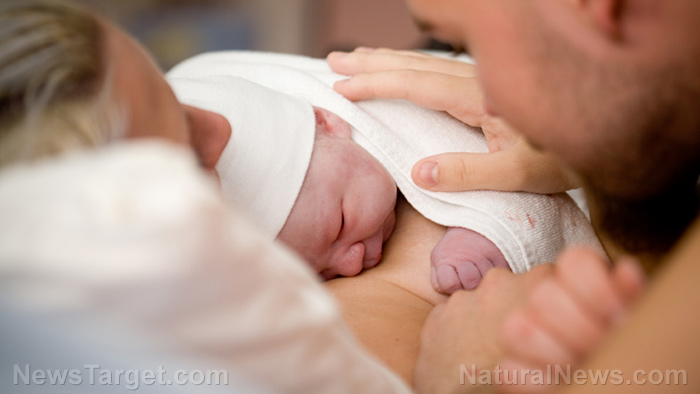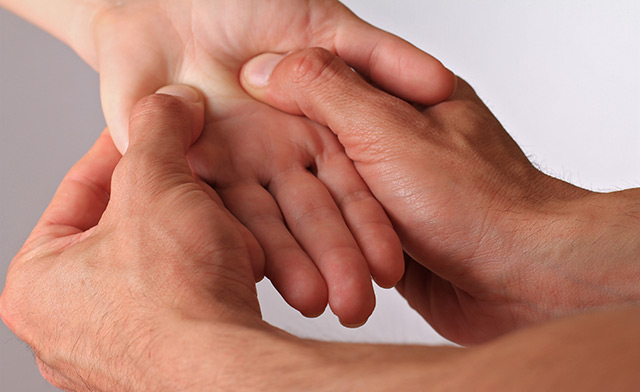Home births found to produce very positive health outcomes even for some “high risk” pregnancies, study finds
10/23/2018 / By Rhonda Johansson

American women considering a home birth would do well to read this: commonly-thought pregnancy risk factors (such as being over 35 years old, being overweight, and having a vaginal birth after a cesarean section) tend to have good outcomes when they give birth at home or in a birth center. This landmark study, conducted by Oregon State University (OSU), is believed to be the first to examine these risk factors for this method of delivery. Currently, only two percent of all births in the U.S. are conducted at home or in a birth center.
The argument for hospital-based births and home births has always been one of apples and oranges. Both medical professionals and midwives agree that low-risk, healthy women do well in a home setting. However, those who are considered high-risk would do better in a hospital setting, where immediate intervention can be accessed. Indeed, most American women admit to choosing a hospital birth in case there are emergencies that require instant attention. But there is little agreement as to what defines a “low” or “high” risk among pregnant women. This new assessment challenges these assumptions, effectively turning oranges to apples, and lending weight to an apples and apples discussion.
Medical ethics require women to have the freedom to choose their own method of delivery. Marit Bovbjerg, Clinical Assistant Professor of Epidemiology at Oregon State University and lead author of the study, says that this is why the study is so important; women need to have as much information as they can get. The goal of the research is to better understand outcomes for both women and babies with some of the more common pregnancy risk factors when giving birth at home and see how these risk factors affected outcomes.
Melissa Cheyney, Medical Anthropologist and Associate Professor in OSU said in an article on Science Daily “There’s a middle or gray area, in terms of risk, where the risk associated with community birth is only slightly elevated relative to a completely low-risk sample. We’re trying to get more information about births that fall in that middle zone so that clinicians and pregnant women can have the best evidence available when deciding where to give birth.” (Related: Home Births with Midwife Safe As Hospital for Babies, Fewer Infections and Less Bleeding for Moms.)
What do I need to know?
Researchers analyzed more than 47,000 midwife-attended community births and looked at the specific, independent contributions to birth outcomes of ten common pregnancy risk factors. These are:
- Advanced maternal age (those who are over 35)
- Obesity
- Gestational diabetes
- Preeclampsia
- Post-term pregnancy (those whose gestation period exceeds 42 weeks)
- Twins
- Breech presentation
- History of both cesarean and vaginal birth
- History of only cesarean birth
The last two factors are called VBACs (or vaginal birth after cesarean) and are typically recommended for hospital births. While medical institutions do not distinguish between the two, the study found that women who delivered vaginally after a previous cesarean and had a previous history of a vaginal birth had better outcomes than women giving birth for the first time. Women who had never given birth vaginally had an increased risk of poor outcomes in a home-based birth. The study also found that women whose babies were in a breech presentation had the highest rate of poor outcomes when giving birth at home. Contrary to popular belief, there was only a slight increase for poor outcomes among women over 35 or obese mothers compared to those without these risks.
So what’s the take-away here? Some pregnancy risk factors do not influence outcomes for home births. Babies born with this method are healthy, and mothers are safe too. However, other risk factors, such as preeclampsia and breech presentation, would present a higher risk of poorer outcomes. Bovbjerg cautions though that “even for these women, it’s important to remember that they can choose a community birth if their faith, culture or other considerations dictate that is the best choice for them.”
Learn more about natural and alternative modes of treatment and healthcare by heading over to WomensHealth.news.
Sources include:
Tagged Under: birth delivery, home births, home-based births, hospital births, midwives, modes of birth delivery, pregnancy



















